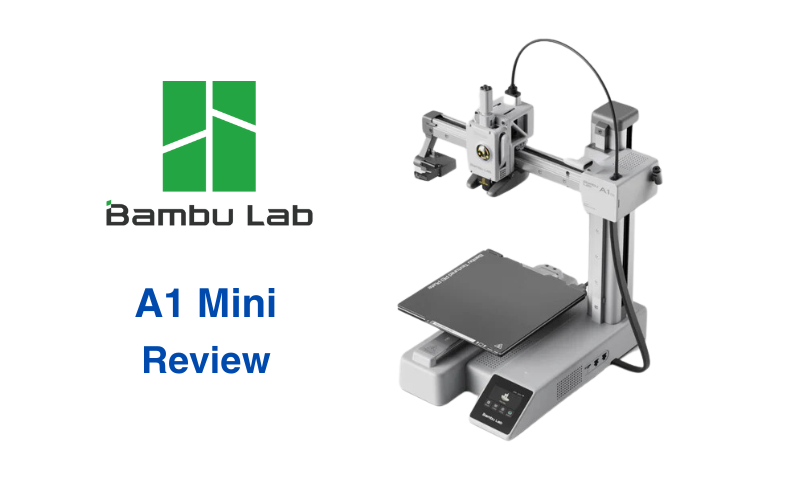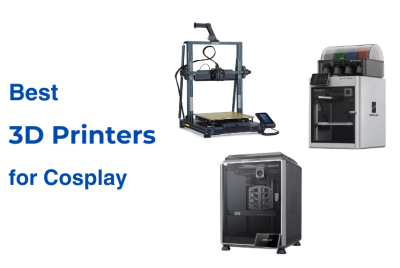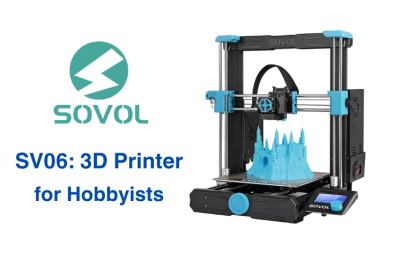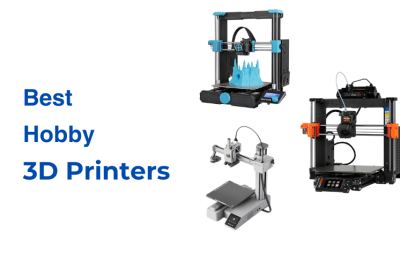Bambu Lab A1 Mini Review
Bambu Lab was founded in 2020 with a clear goal—simplify 3D printing and bring innovation. They entered the market with the X1 series, a lineup that introduced features like AI-assisted print monitoring and a CoreXY system for faster printing speeds. The X1 Carbon, in particular, stood out because it automated tasks that many users had to do manually, such as leveling and failure detection. This focus on automation and efficiency quickly made Bambu Lab a recognizable name in the 3D printing community.
Following the success of the X1 series, Bambu Lab released the P1 series, which kept some of the same fast printing capabilities but scaled back on advanced features to create a more budget-friendly option. The P1 series appealed to users who wanted a powerful printer but didn’t need extras like multi-material support.
Now, Bambu Lab has added the A1 Mini to their lineup. This model targets users who want a compact printer that fits into smaller spaces while maintaining print quality and reliability. In this Bambu Lab A1 Mini review, we’ll take a closer look at its capabilities and whether it meets the needs of everyday users who want a simpler setup.
Design and Build Quality
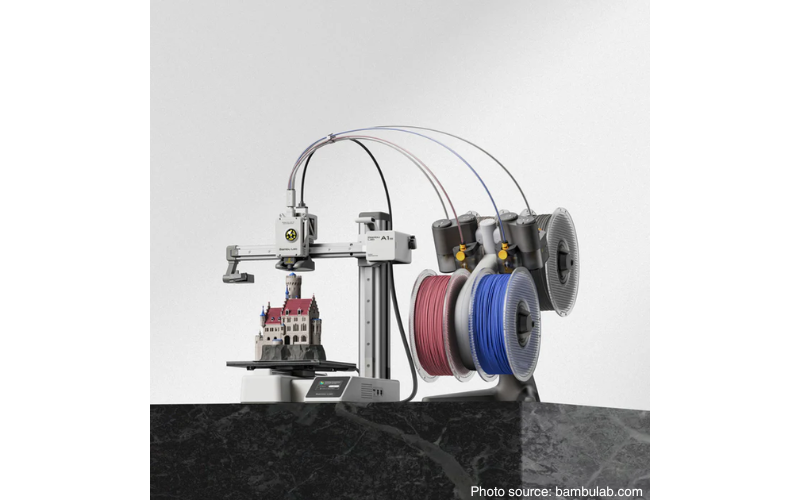
The Bambu Lab A1 Mini has a small footprint at 347 x 315 x 365 mm, with a build volume of 180 x 180 x 180 mm—big enough for everyday prints but compact enough to fit on a desk without taking over. Its cantilever-style frame is simple and keeps the overall build lightweight. To keep things sturdy during fast printing, Bambu Lab used full-metal rails and bearings, which help minimize wobbling and keep movements smooth.
What’s convenient is that the A1 Mini comes fully assembled and pre-calibrated. You won’t have to mess around with frame adjustments or initial setup—it’s pretty much plug-and-print after unboxing. The bed slinger design may seem standard, but their motion system makes it handle high speeds well.
Another thing worth noting is how quiet it is. With active motor noise cancellation, it stays under 48 dB in silent mode, making it a good fit for quieter spaces like home offices or workrooms.
Key Features and Specifications
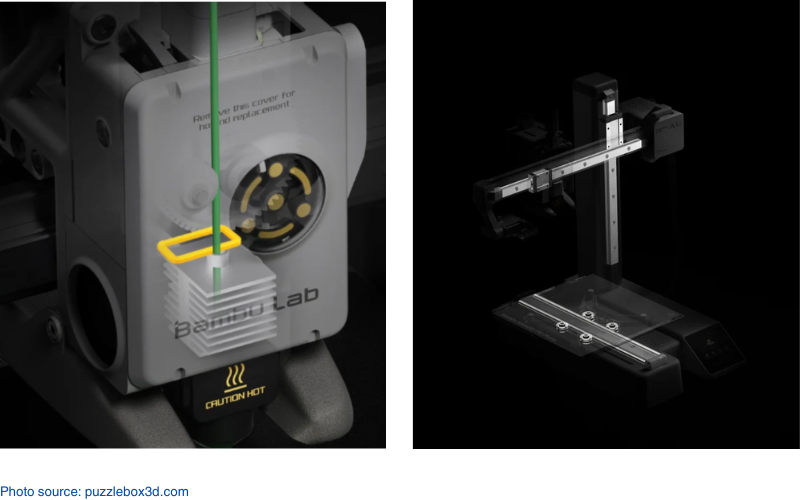
| Key Features | Specifications |
|---|---|
| Full Auto Calibration | Build Volume: 180 x 180 x 180 mm |
| 4-Color Printing with AMS Lite | Hot End Temperature: Up to 300°C |
| Low Noise Performance | Nozzle Options: 0.4 mm (default), with 0.2 mm, 0.6 mm, and 0.8 mm available |
| Active Flow Rate Compensation | Bed Temperature: Up to 80°C |
| High-Speed Printing | Print Bed Material: Textured and smooth PEI-coated magnetic plates |
| Plug-and-Play Setup: | Filament Compatibility: Supports PLA, PETG, TPU, and PVA |
| Built-in Camera | Connectivity: Wi-Fi and microSD |
| Filament Run Out Sensor, Filament Tangle Sensor, Filament Odometry Sensor | Nozzle Diameter (Included): 0.4 mm |
| Nozzle Diameter (Optional): 0.2 mm, 0.6 mm, 0.8 mm | |
| Filament Diameter: 1.75 mm | |
| Max Speed of Toolhead: 500 mm/s Max Acceleration of Toolhead: 10000 mm/s² |
The Bambu Lab A1 Mini comes with a set of features designed to simplify 3D printing. It handles calibration automatically, adjusting the bed level, Z-offset, and vibration tuning before each print, so there’s no need to tweak settings manually. Its multi-color printing is supported by the AMS Lite system, which allows you to print with up to four colors.
The A1 Mini is also designed to keep noise levels low. In silent mode, it runs at under 48 dB. Another key feature is active flow rate compensation, which uses a sensor to track nozzle pressure and adjust the flow rate in real time. This helps maintain smooth, consistent extrusion, even at speeds of up to 500 mm/s with accelerations of 10,000 mm/s².
Getting started is quick, thanks to the fully assembled, pre-tuned design. You can have it printing within about 20 minutes of unboxing. The all-metal hot end heats up to 300°C, which makes it compatible with common filaments like PLA, PETG, TPU, and PVA. However, it is not suitable for tougher materials like ABS or reinforced polymers. The A1 Mini also includes a built-in camera that you can use to monitor prints remotely through Bambu Lab’s software and create timelapse videos if needed.
Comparisons
Bambu Lab A1 Mini vs Bambu Lab X1 Carbon
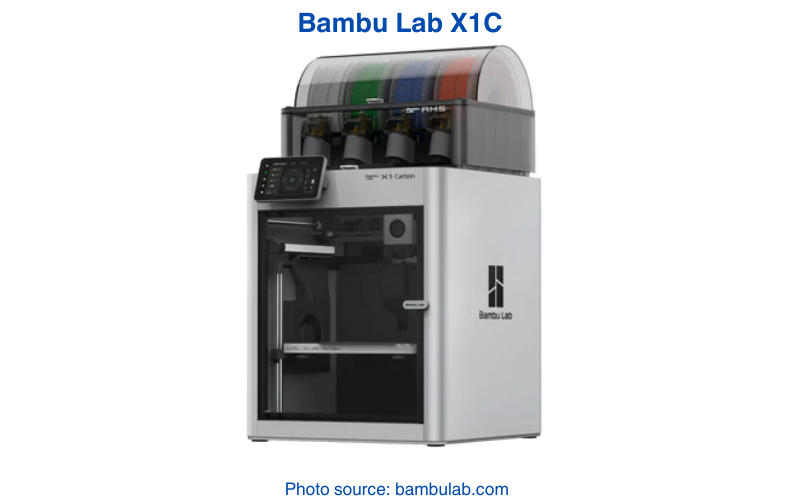
Bambu Lab designed the A1 Mini and X1 Carbon for different types of users. The A1 Mini is meant to be compact and simple to use. While the X1 Carbon has more advanced features for larger projects.
- Printing System: The X1 Carbon uses a CoreXY motion system, which is known for faster and more efficient movements. The A1 Mini uses a bed slinger setup, but maintains impressive speed with its motion control system.
- Build Volume: The X1 Carbon has a larger build volume of 256 x 256 x 256 mm. The A1 Mini has a build volume of 180 x 180 x 180 mm. It’s enough for everyday prints but better suited for smaller projects.
- Multi-Color Support: Both printers support multi-color printing. The A1 Mini uses the AMS Lite, a simpler system that handles up to four colors. The X1 Carbon’s AMS system is bigger and can manage more complex multi-material prints.
- Material Compatibility: The X1 Carbon supports a wider range of materials thanks to its higher build plate temperature. The A1 Mini works well with common materials like PLA, PETG, and TPU. Although it’s not ideal for filaments that need higher heat, like ABS or nylon.
Bambu Lab A1 Mini vs Prusa Mini+
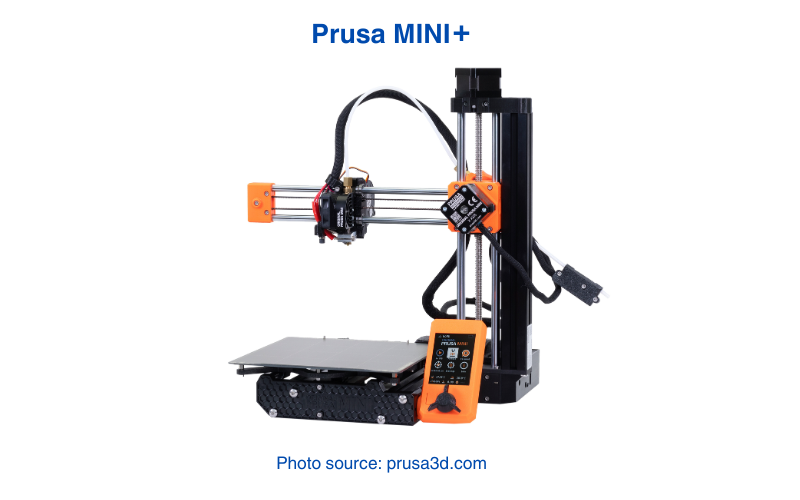
The Bambu Lab A1 Mini and Prusa Mini+ are both compact printers that aim to make 3D printing easier, but they go about it differently.
- Printing System: The Prusa Mini+ uses a single direct-drive extruder without multi-color support unless upgraded. In contrast, the A1 Mini includes AMS Lite for four-color printing right out of the box.
- Build Volume: Both printers have the same build volume of 180 x 180 x 180 mm. However, the A1 Mini is designed to be ready to go with no additional setup. While the Prusa Mini+ might require some adjustments after assembly.
- Auto Calibration: The A1 Mini handles all calibration automatically. It adjusts everything from the bed level to vibration tuning before every print. The Prusa Mini+ uses mesh bed leveling but still requires some manual steps along the way.
- Print Speed and Noise: The A1 Mini is built for faster printing at speeds up to 500 mm/s and runs quieter due to active motor noise cancellation. The Prusa Mini+ prints more slowly and tends to make more noise during operation.
Real World Applications
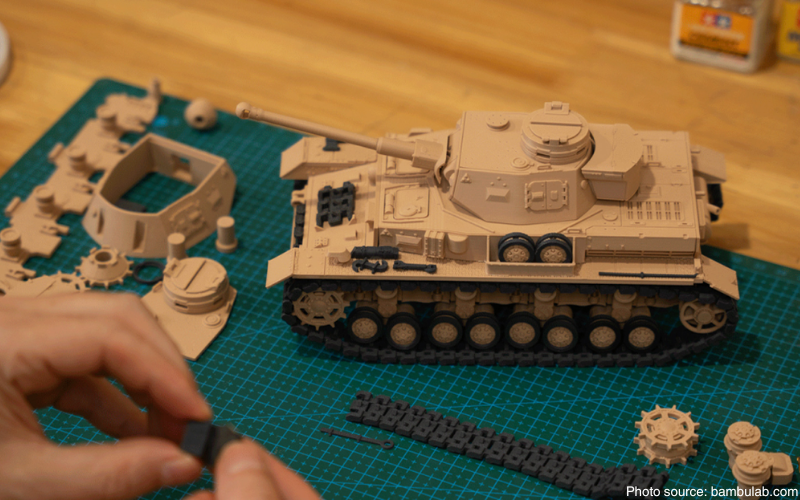
The Bambu Lab A1 Mini’s speed and multi-color support make it useful for a variety of projects:
- Prototyping and Design: If you’re working on product designs or testing concepts, the A1 Mini helps you create quick prototypes without fussing over manual settings. The AMS Lite system makes it easier to highlight different design elements by printing in multiple colors in a single go.
- Educational Use: The pre-assembled design and auto-calibration is ideal for classrooms where time spent on setup is minimal. Its quiet operation means it won’t be disruptive during lessons or in small workshops.
- Home Projects: The A1 Mini’s fast print speeds make these small home projects more manageable. With multi-color support, it’s easy to personalize everyday items with more than just a standard look.
- Cosplay Accessories: It’s useful for printing smaller props or add-on pieces like armor details or decorative emblems. The A1 Mini’s high-speed capabilities and support for higher-temperature filaments mean you can experiment with materials that need more durability.
Final Note
The Bambu Lab A1 Mini keeps things simple without cutting back on important features. Its full auto calibration handles all the setup steps for you, from bed leveling to vibration tuning, so you can get straight to printing. The AMS Lite system makes multi-color printing easy, adding more flexibility without complicating the process.
It’s build volume of 180 x 180 x 180 mm is not built for oversized projects. But its print speeds of up to 500 mm/s and quiet operation at under 48 dB is made for smaller workspaces. The active flow rate compensation helps keep prints consistent, even at higher speeds. This is a rare feature for printers in this size range.
The 80°C max bed temperature makes it unsuitable for tougher materials like ABS. But it handles standard filaments like PLA, PETG, and TPU well. The pre-assembled design, all-metal hot end, and remote monitoring through Bambu Lab’s apps make it an easy printer to live with day-to-day. The A1 Mini is a compact, fast, and user-friendly 3D printer for anyone who wants reliable multi-color printing in a space-saving package.

